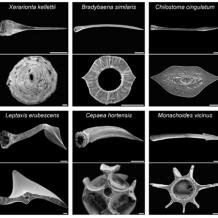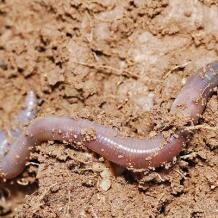Topic: Love darts in slugs, snails and annelid worms
The curious habit of stabbing their partners with sharp calcareous (or chitinous) darts during courtship and prior to actual copulation has understandably attracted considerable attention.
 The curious habit of many hermaphrodite slugs and snails (molluscs) of stabbing their respective partners with sharp calcareous (or chitinous) darts during courtship and prior to actual copulation has understandably attracted considerable attention. The darts are not actually shot, but protruded and can cause injury (and it is said even death). In a Japanese snail the “stabbing” may take place twice a second, and given “foreplay” (if that is quite the word) may last more than 20 minutes the number of stabs may exceed 3,000.
The curious habit of many hermaphrodite slugs and snails (molluscs) of stabbing their respective partners with sharp calcareous (or chitinous) darts during courtship and prior to actual copulation has understandably attracted considerable attention. The darts are not actually shot, but protruded and can cause injury (and it is said even death). In a Japanese snail the “stabbing” may take place twice a second, and given “foreplay” (if that is quite the word) may last more than 20 minutes the number of stabs may exceed 3,000.
 Earlier ideas that this activity was stimulatory (!) or designed to co-ordinate egg and sperm exchange have been superseded by strong evidence that the dart introduces quantities of mucus that carry chemicals (known as allohormones). These serve to reconfigure the reproductive organs to more readily accept the sperm (delivered in a spermatophore), in particular by closing the access to an organ that can digest the sperm, and also by initiating peristaltic contractions that help move the spermatophore towards the female eggs. This is, therefore, linked to the important evolutionary topic of sperm competition, a central aspect of sexual selection whereby either sex endeavours to facilitate or prevent gametes reaching their necessary destination.
Earlier ideas that this activity was stimulatory (!) or designed to co-ordinate egg and sperm exchange have been superseded by strong evidence that the dart introduces quantities of mucus that carry chemicals (known as allohormones). These serve to reconfigure the reproductive organs to more readily accept the sperm (delivered in a spermatophore), in particular by closing the access to an organ that can digest the sperm, and also by initiating peristaltic contractions that help move the spermatophore towards the female eggs. This is, therefore, linked to the important evolutionary topic of sperm competition, a central aspect of sexual selection whereby either sex endeavours to facilitate or prevent gametes reaching their necessary destination.
 The love darts of snails and slugs come in an impressive variety of shapes and sizes, and there is good evidence that within the group of molluscs known as the Stylommatophora they have evolved independently a number of times. Of equal significance is that there is a correlated function between the use of these darts, the shape of the shell and the behaviour during mating.
The love darts of snails and slugs come in an impressive variety of shapes and sizes, and there is good evidence that within the group of molluscs known as the Stylommatophora they have evolved independently a number of times. Of equal significance is that there is a correlated function between the use of these darts, the shape of the shell and the behaviour during mating.
Much more remarkable, however, in the context of convergence is the evolution of a remarkably similar behaviour in some earthworms (annelids) which are also hermaphrodite, engage in courtship and extended copulation during which some of the chitinous setae are driven forcibly through the cuticle and into the partner, sometimes penetrating the body wall and almost reaching the coelomic cavity. Here too the evidence suggests that a allohormone is released and manipulates sperm storage and survival.
Cite this web page
Map of Life - "Love darts in slugs, snails and annelid worms"
https://mapoflife.org/topics/topic_71_love-darts-in-slugs-snails-and-annelid-worms/
March 4, 2021

